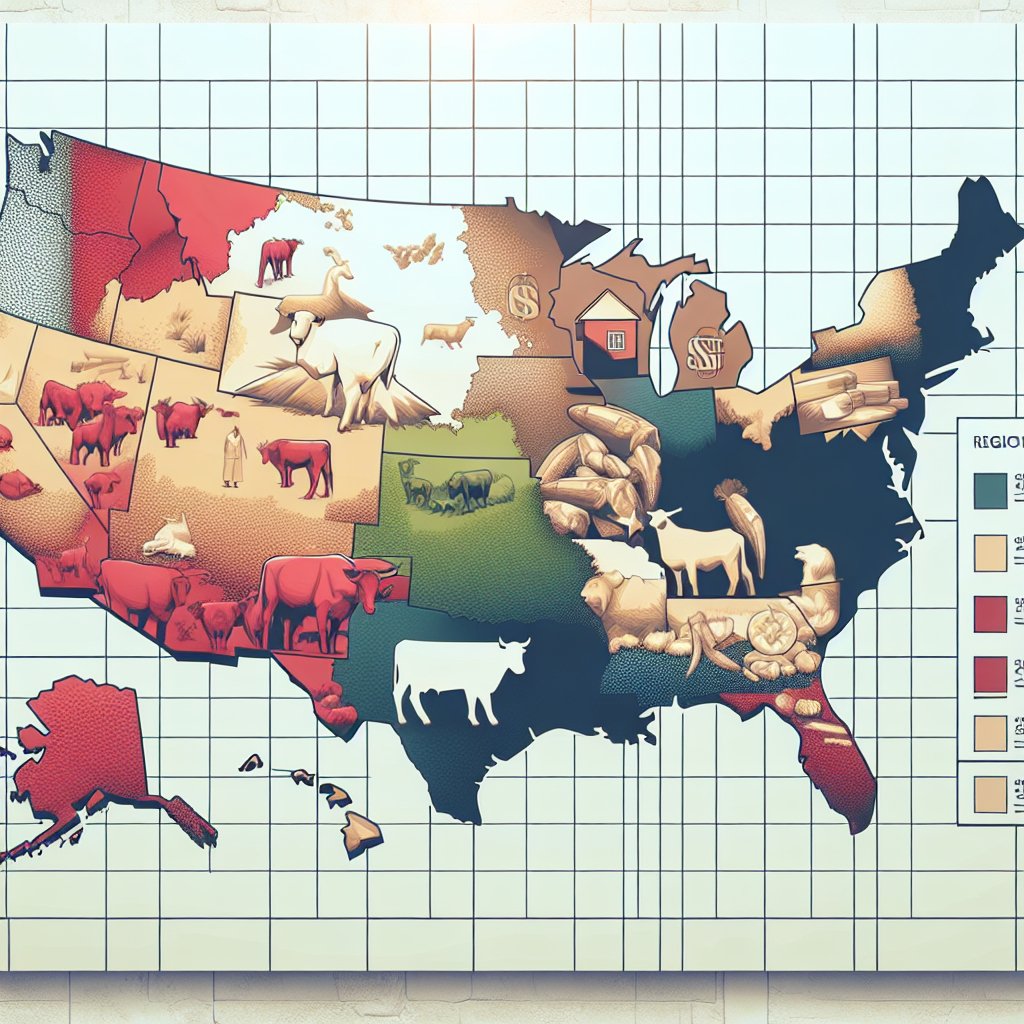The prices of beef can vary significantly across different regions, influenced by a multitude of factors including local demand, supply chain logistics, and regional agricultural practices. Understanding these regional differences is crucial for consumers, farmers, and policymakers alike, as it can impact everything from grocery bills to farming strategies. This article delves into the various factors that contribute to regional price differences in beef, exploring the economic, environmental, and cultural influences that shape the beef market.
Factors Influencing Regional Beef Prices
Several key factors contribute to the variations in beef prices across different regions. These factors can be broadly categorized into economic, environmental, and cultural influences.
Economic Factors
Economic conditions play a significant role in determining beef prices. The following are some of the primary economic factors that influence regional pricing:
- Supply and Demand: The basic economic principle of supply and demand is a major driver of beef prices. In regions where beef is in high demand but supply is limited, prices tend to rise. Conversely, in areas with an oversupply of beef, prices may drop.
- Transportation Costs: The cost of transporting beef from farms to markets can vary greatly depending on the region. Areas that are farther from processing plants or major markets may see higher prices due to increased transportation costs.
- Labor Costs: The cost of labor in different regions can also affect beef prices. Regions with higher labor costs may see increased prices for beef as producers pass on these costs to consumers.
- Market Access: Regions with better access to markets, such as urban areas, often have higher prices due to increased competition and consumer willingness to pay more for quality products.
Environmental Factors
Environmental conditions can also significantly impact beef production and pricing. Key environmental factors include:
- Climate: Different climates can affect the types of cattle that can be raised in a region, as well as the quality and quantity of feed available. For example, regions with abundant grasslands may produce higher-quality beef at lower costs compared to arid regions where feed must be imported.
- Land Availability: The availability of land for grazing and farming can vary widely between regions. Areas with more arable land may have lower beef prices due to the ability to raise cattle more efficiently.
- Water Resources: Access to water is crucial for cattle farming. Regions facing water scarcity may experience higher costs associated with beef production, leading to increased prices.
Regional Price Comparisons
To better understand the regional differences in beef prices, it is helpful to compare specific areas. Below are some examples of how prices can vary across different regions.
United States
In the United States, beef prices can differ dramatically from one state to another. For instance:
- Midwest: States like Nebraska and Kansas, known for their extensive cattle ranching, often have lower beef prices due to high supply and efficient production methods.
- West Coast: In contrast, states like California may experience higher beef prices due to higher production costs, including labor and land prices, as well as stricter environmental regulations.
- South: Southern states, such as Texas, also have competitive prices due to a large cattle population and favorable grazing conditions, but prices can fluctuate based on seasonal demand and drought conditions.
Europe
In Europe, beef prices can also vary widely between countries:
- United Kingdom: The UK often sees higher beef prices due to stringent animal welfare standards and a focus on high-quality, grass-fed beef.
- France: France has a strong beef culture, and prices can be influenced by regional specialties, such as Charolais beef, which commands a premium price.
- Eastern Europe: In contrast, countries in Eastern Europe may have lower beef prices due to lower production costs and less stringent regulations.
Consumer Preferences and Cultural Influences
Consumer preferences and cultural factors also play a significant role in shaping regional beef prices. Different regions may have varying tastes and traditions that influence the types of beef products that are in demand.
Regional Preferences
In some regions, certain cuts of beef may be more popular than others, affecting their prices:
- Steaks vs. Ground Beef: In areas where steak is a popular choice, prices for premium cuts may be higher, while ground beef may be more affordable.
- Local Specialties: Regions may have local specialties that command higher prices, such as Wagyu beef in Japan or Kobe beef, which is known for its marbling and flavor.
Cultural Influences
Cultural attitudes towards beef consumption can also impact prices:
- Health Trends: In regions where there is a growing trend towards plant-based diets, beef prices may be affected as demand decreases.
- Ethical Considerations: Consumers in some areas may be willing to pay a premium for grass-fed or organic beef, influencing overall market prices.
Conclusion
Understanding the regional differences in beef prices is essential for consumers, farmers, and policymakers. By considering the economic, environmental, and cultural factors that influence pricing, stakeholders can make more informed decisions. As the beef market continues to evolve, staying informed about these regional variations will be crucial for navigating the complexities of the agricultural landscape.




